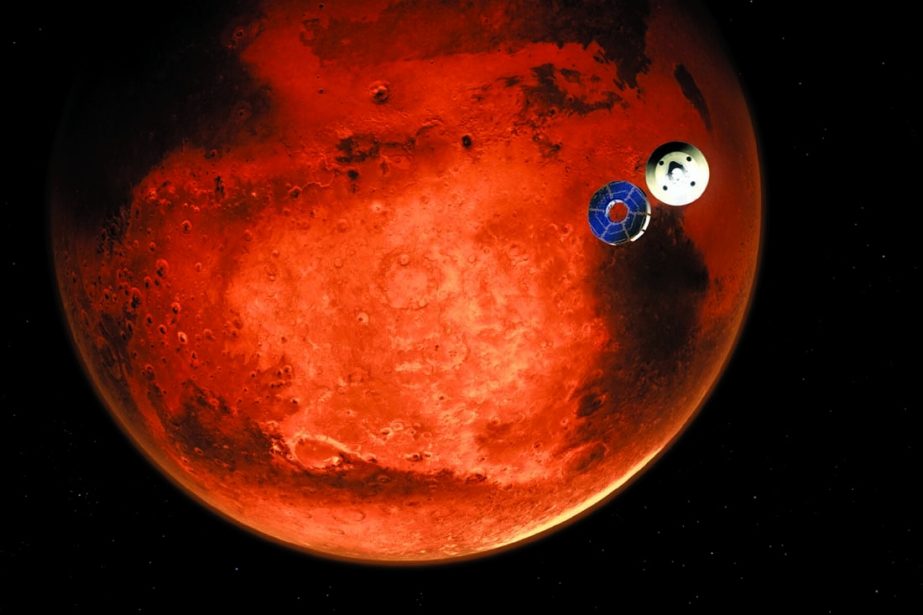
The New York Times :
On Monday, the NASA spacecraft Juno passed within 645 miles of Ganymede, the largest of Jupiter’s 79 known moons and indeed the largest moon in the entire solar system. It was the first up-close examination of Ganymede since an earlier NASA probe, Galileo, passed by in December 2000.
NASA on Tuesday released two images from the flyby, revealing in remarkable detail craters, possible tectonic faults and distinct bright and dark terrains.
One image, by the main camera, JunoCam, captured most of the day side of Ganymede. For now, the image is in black and white. But when additional versions of the same view, taken through red and blue filters, are sent back from the spacecraft, the images can be combined into a colour portrait.
The second image was captured by a navigation camera called the Stellar Reference Unit that can operate in low light and was able to get a clear view of the night side of Ganymede as Juno flew by.
“It will be fun to see what the two teams can piece together” with the forthcoming images, said Heidi Becker, the Juno mission’s radiation monitoring lead.
The spacecraft will continue to send back its observations over the coming days.
Juno, which arrived at Jupiter on July 4, 2016, is just now finishing its primary mission to probe the deep interior of the largest planet that orbits the sun. It has discovered that storms like the Great Red Spot penetrate deep down into the giant planet’s gassy atmosphere and that the core of Jupiter is bigger and more diffuse than had been expected.
But instead of ending the mission by sending Juno on a death dive into Jupiter, NASA has extended the mission through 2025. Juno will now make 42 additional orbits of Jupiter, and some of those orbits will include close flybys of Ganymede and two of Jupiter’s other large moons, Io and Europa.
“We’re very fortunate that the spacecraft is healthy,” said Scott Bolton, the principal investigator of the mission, “and able to produce such great science and all the results and incredible imagery all these years.”
Ganymede, at more than 3,200 miles wide, is bigger than the planet Mercury and is the only moon large enough to generate its own magnetosphere – a bubble of magnetic fields that trap and deflect charged particles from the sun.
“We’re well equipped, probably better equipped to measure the magnetosphere of Ganymede and its interaction with Jupiter’s magnetosphere than any spacecraft has ever been,” Bolton said.
The data that Juno gathers will help a couple of future missions. Next year, the European Space Agency is to launch JUICE – the Jupiter Icy Moons Explorer – which will make multiple flybys of three large moons – Ganymede, Europa and Callisto – before entering orbit around Ganymede in 2032.
Another NASA mission, Europa Clipper, is to launch later this decade and will focus on Europa, one of the most intriguing worlds for planetary scientists searching for life elsewhere in the solar system. Europa possesses a deep ocean under its ice-encrusted surface, with heat from the moon’s core possibly providing enough energy for organisms to live in the waters.
“We’ll sort of fill in the blank a little bit,” Bolton said.
The immense pull of Jupiter’s gravity is steadily tilting Juno’s orbit so that it now makes its closest approaches of Jupiter in the northern hemisphere. That was not ideal for some of the observations during the primary mission, but now it will allow planetary scientists to get a better look at Jupiter’s north pole and the region’s enigmatic storms.

